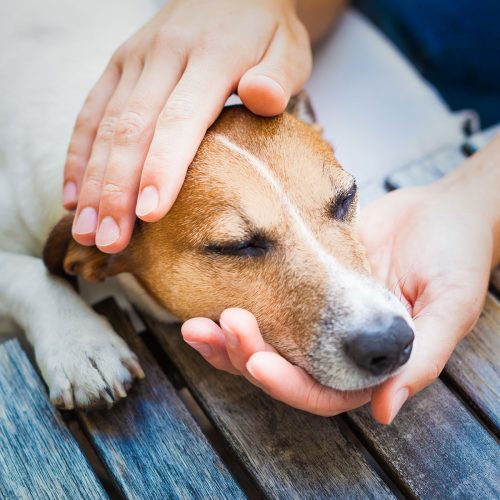If you’re new to having an indoor rabbit—or you’re just ready to upgrade your bunny’s living situation—you’ve probably already discovered that litter training is a thing. And not only that, but choosing the right litter is a much bigger deal than it first appears.
Rabbits are naturally clean animals, and most can be litter trained easily. But not all litter types are created equal—some can cause health problems, others are messy, and a few simply won’t work for a sensitive rabbit nose. So how do you pick the perfect litter for your furry friend?
Let’s hop into the world of rabbit litter together. 🐰 Whether you’re setting up a litter box for the first time or tweaking an existing setup, this guide will help you make the most informed choice possible for your bun’s health, your home’s cleanliness, and your wallet’s happiness.
Why Litter Choice Matters
Before we dive into specific types, let’s talk about why the type of litter you choose is so important.
1. Health and Safety
Rabbits have extremely sensitive respiratory systems and a habit of nibbling on just about everything—including their litter. That means some litters that are fine for cats or other pets can be downright dangerous for bunnies.
2. Odor Control
While rabbits themselves don’t smell, their urine can be strong—especially if you have an unneutered male. The right litter can help neutralize ammonia odors and make cleaning up a lot easier.
3. Ease of Cleaning
Nobody wants to scrub out the litter box every day. The wrong litter can stick, get soggy, or scatter all over your floor. The right one should make scooping and cleaning a breeze.
4. Eco-Friendliness
Many rabbit owners prefer natural, compostable materials—because let’s face it, between hay, food, and droppings, you’ll be going through a lot of litter.
What Makes a Good Rabbit Litter?
When shopping for litter, keep an eye out for these features:
- Absorbent (controls moisture)
- Odor-controlling (reduces ammonia smell)
- Dust-free (to protect lungs)
- Non-toxic and safe if ingested
- Easy to clean
- Affordable and sustainable
How to Socialize a Rescue Dog with Other Pets
The Best Types of Rabbit-Safe Litter (Ranked and Reviewed)
Let’s break down the most commonly used litter types for indoor rabbits—starting with the most recommended.
1. Paper-Based Litter (e.g., Carefresh, Yesterday’s News)
Best for: Most indoor rabbits
Paper-based litters are a favorite among rabbit owners for good reason. They’re soft, super absorbent, low in dust, and generally safe if nibbled. They’re also compostable.
Pros:
- Excellent odor control
- Safe for bunny tummies
- Environmentally friendly
- Easy to find
Cons:
- Can be a bit pricey if you’re using a lot
- Some types may clump when wet (not ideal for frequent chewers)
Pro Tip: Use it only in the back half of the litter box and line the front with hay—rabbits love to munch while doing their business.
2. Wood Pellets (e.g., hardwood stove pellets or equine bedding pellets)
Best for: Budget-conscious or multi-rabbit homes
Wood stove or horse stall pellets (made from compressed hardwood) are highly absorbent and great at controlling odor. They expand and break down when wet, making it easy to see when the litter box needs a change.
Pros:
- Very cost-effective (a 40 lb. bag can last months)
- Natural and biodegradable
- Excellent ammonia absorption
Cons:
- Can be heavy to haul and store
- Some rabbits don’t like the texture
- Avoid pine or cedar shavings unless kiln-dried (more on that below)
Note: Always make sure pellets are untreated and kiln-dried, with no additives or binders.
3. Shredded Paper (DIY or Commercial)
Best for: Emergency or short-term use
Shredded paper is inexpensive and safe, especially if you’re recycling non-glossy newspaper or computer paper. While it’s not the most absorbent option, it can be useful in a pinch.
Pros:
- Free if you shred your own
- Safe and non-toxic
- Compostable
Cons:
- Poor odor control
- Gets soggy quickly
- Needs frequent changing
Great for short-term setups (like post-surgery recovery boxes) or if you’re trying litter training for the first time.
4. Aspen Shavings
Best for: Bunnies who like a more natural texture
Aspen is a safer alternative to pine or cedar shavings, which can cause respiratory and liver problems. Aspen is considered a safe wood option and is somewhat absorbent.
Pros:
- Better than pine or cedar
- Lightweight
- Natural and compostable
Cons:
- Still not as absorbent as paper or pellets
- Can be dusty, depending on the brand
Buyer Beware: Not all “wood shavings” are created equal. Always read the label and avoid softwoods unless specifically marked as rabbit-safe.
Litter Types to Avoid for Indoor Rabbits
Now that we’ve covered the good stuff, here are a few materials you should NOT use:
Clay-Based Cat Litter
Clay clumps when wet—and that’s exactly why it’s dangerous for rabbits. If your bun ingests it (which they likely will), it can cause intestinal blockages, which are often fatal.
Even the “natural” or “unscented” types are not safe for rabbits.
Pine or Cedar Shavings (Non-Kiln-Dried)
These emit aromatic hydrocarbons (phenols), which can affect your rabbit’s liver function and cause respiratory irritation.
Stick with aspen or certified kiln-dried options if you’re using wood.
Corn Cob Litter
This may sound natural, but it’s highly mold-prone and can be dangerous if eaten. It’s also not very absorbent.
Clumping Litters or Silica Crystals
Again, these are common in cat products, but they clump and expand in the digestive tract, making them a serious choking or blockage hazard.
How to Set Up a Rabbit Litter Box Properly
Now that you know what to use (and avoid), let’s walk through how to set up the perfect litter box.
Step-by-Step:
- Choose the Right Box
- High-back plastic cat litter boxes work great.
- Under-bed storage containers also work well for large rabbits or pairs.
- Avoid wire-bottomed boxes—they’re hard on rabbit feet.
- Line the Bottom
- Add a 1–2 inch layer of your chosen litter.
- Avoid overfilling—bunnies don’t need a deep layer like cats.
- Top with Hay
- Place hay on one end of the litter box.
- Rabbits love to eat and poop at the same time, so this encourages good habits.
- Place in the Right Spot
- Most rabbits pick one or two “go-to” bathroom corners—put the litter box there.
- If your bunny is new to litter training, you may need multiple boxes.
How Often Should You Change Rabbit Litter?
- Spot clean daily: Remove any soiled areas and add fresh litter.
- Full clean 2–3 times a week: Dump out old litter, wash the box with mild soap or vinegar, dry, and refill.
Some rabbit owners do a full clean every day, especially if they have multiple buns or limited airflow in their home.
Tips to Encourage Litter Training
- Use positive reinforcement—give treats when your rabbit uses the box.
- Clean up accidents immediately to remove scent cues.
- If they have accidents, don’t punish—rabbits are sensitive and learn best through gentle encouragement.
- Consider neutering/spaying—fixed rabbits are generally easier to litter train and less territorial.
Wrapping Up: What’s the Best Rabbit Litter Overall?
There’s no one-size-fits-all answer, but here’s a quick summary:
| Litter Type | Safety | Absorbency | Odor Control | Eco-Friendly | Cost |
| Paper-Based (Carefresh) | ✅ High | ✅ Good | ✅ Great | ✅ Yes | 💲💲💲 |
| Wood Pellets | ✅ High | ✅ Excellent | ✅ Excellent | ✅ Yes | 💲 |
| Shredded Paper | ✅ High | ❌ Poor | ❌ Poor | ✅ Yes | Free |
| Aspen Shavings | ✅ Moderate | ⚠️ Moderate | ⚠️ Moderate | ✅ Yes | 💲 |
For most rabbit owners, wood pellets or paper-based litter strike the perfect balance of affordability, safety, and performance.
Final Thoughts: Your Bunny Will Thank You
Choosing the right litter might seem like a small detail, but it makes a huge difference in your rabbit’s comfort, health, and hygiene. By picking a litter that’s absorbent, safe, and odor-controlling, you’re making life better not just for your bunny—but for yourself, too.
So go ahead—test a few options and see what works best for your rabbit’s unique preferences. Your little fluffball will thank you with happy hops, clean feet, and fewer messes to clean.



